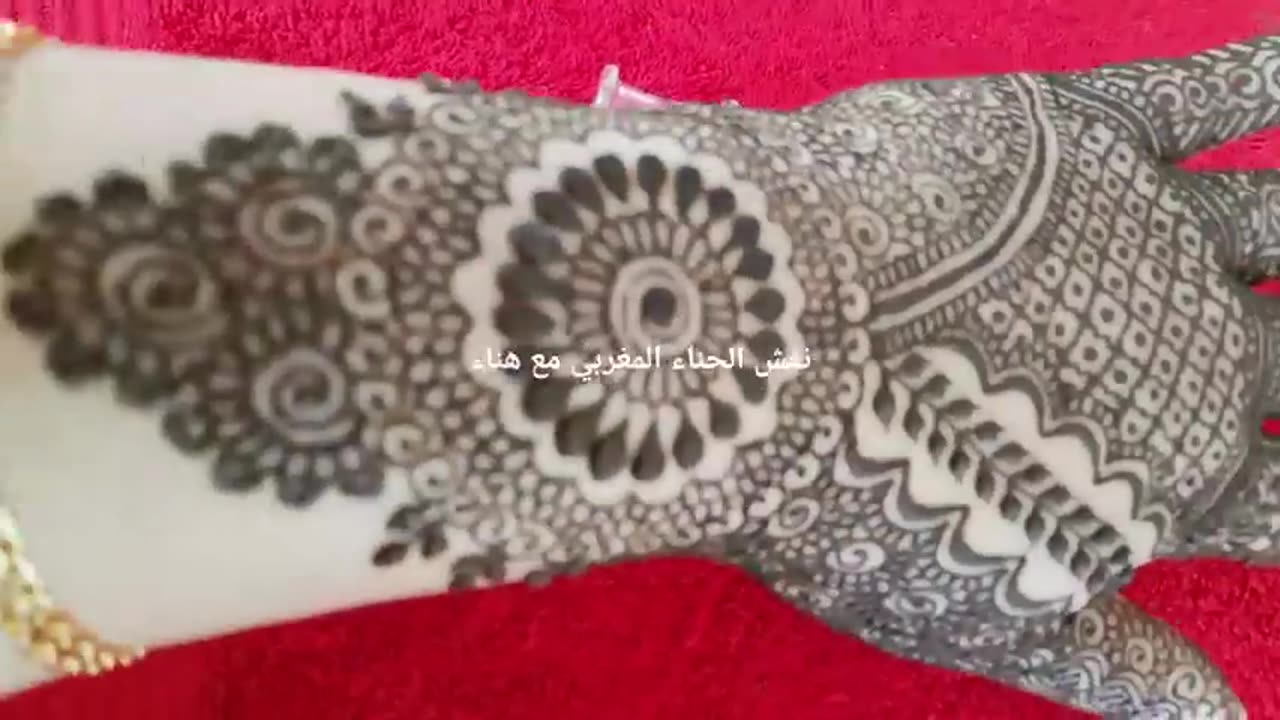Premium Only Content

HENNA STYLE 26
**Henna art** is a form of temporary body art that involves applying henna paste to the skin to create intricate designs, patterns, or tattoos. Here's an explanation of what henna art entails:
### Henna Paste Preparation:
1. **Henna Powder**: Henna powder, derived from the leaves of the henna plant (Lawsonia inermis), is the primary ingredient. It's ground into a fine powder before use.
2. **Mixing**: The henna powder is mixed with various natural ingredients like lemon juice, tea, or essential oils to create a smooth paste. Some recipes include sugar or honey to enhance color and adhesion.
### Application Process:
1. **Design Creation**: The artist uses a fine-tipped applicator or cone to draw intricate designs on the skin. These designs can vary from simple patterns to complex motifs and can be inspired by cultural traditions or personal preferences.
2. **Drying Time**: Once applied, the henna paste needs time to dry on the skin. This can take anywhere from a few minutes to several hours, depending on the desired intensity of color and the specific henna recipe used.
3. **Wrapping or Sealing**: Some artists may wrap the area with medical tape or plastic wrap to protect the design and enhance color development. Others may apply a lemon-sugar solution to seal the paste and intensify the color.
4. **Removal of Paste**: After the paste has dried and set, it's gently removed, revealing the stained design underneath. The initial color of the stain may be light orange but will darken over the next 24-48 hours as it oxidizes.
5. **Aftercare**: To prolong the life of the henna design, it's essential to avoid contact with water for the first 24 hours after application. Applying a thin layer of oil or balm to the design can also help protect it and enhance color retention.
### Cultural and Occasional Significance:
- **Cultural Traditions**: Henna art has deep cultural roots in many parts of the world, particularly in South Asia, the Middle East, and North Africa. It's often associated with weddings, festivals, and other celebrations, where it's used to adorn the hands and feet of the bride and guests.
- **Symbolism**: The designs created with henna often carry symbolic meanings related to blessings, protection, fertility, and luck. Different cultures have their interpretations and traditions associated with henna art.
### Popularity and Modern Trends:
- **Global Appeal**: In recent years, henna art has gained popularity worldwide as a form of temporary body decoration. It's embraced by people of diverse backgrounds and is often sought after for its intricate beauty and non-permanent nature.
- **Innovation**: Modern henna artists may incorporate contemporary elements into their designs, blending traditional patterns with modern aesthetics. Some artists specialize in creating custom designs tailored to individual preferences and occasions.
Overall, henna art serves as both a cultural tradition and a modern form of self-expression, appreciated for its beauty, versatility, and temporary nature.
-
 59:57
59:57
Sean Unpaved
2 hours agoLee Corso's Final College Game Day, NCAA Rewrites Rules, Benches Clear In Pittsburgh!
20.2K -
 DVR
DVR
Mark Kaye
2 hours ago🔴 TRUMP is FED Up! Calls For Jerome Powell to Be Fired!
3.76K -
 1:01:03
1:01:03
Timcast
2 hours agoDemocrat Faces CRIMINAL CHARGE Over El Salvador STUNT, Logan Act VIOLATION Questioned
136K145 -
 2:33:29
2:33:29
Survival Dispatch
1 day agoEXPOSED Why Americans Are Rejecting Legacy Media EP460
1.49K -
 1:03:00
1:03:00
Steven Crowder
5 hours ago🔴TOUGH LOVE: Grok Got Sexual and Tried to Ruin My Marriage
278K330 -
 56:49
56:49
The Rubin Report
4 hours agoRoom Sits In Stunned Silence After RFK Jr.’s Alarming Announcement on Growing Health Crisis
61.1K54 -
 2:08:59
2:08:59
Benny Johnson
3 hours agoSHOCK Video Proves Katy Perry 'Space Flight' Was FAKE: 'Open Doors On A Space Ship?' Trump Reveals..
125K105 -
 1:16:59
1:16:59
Flyover Conservatives
13 hours agoThe Haunting Heroes of The Left - Rapists and Murderers + Robin Bullock’s Prophecies About Gold and Silver | FOC Show
42.5K3 -
 51:51
51:51
Grant Stinchfield
2 hours ago $1.84 earnedHANDSHAKES FOR A SCHOOL SHOOTER?! FOUR SHOT, COPS GRIN — AMERICA FUMES
36.2K6 -
 29:07
29:07
Rethinking the Dollar
2 hours agoTrump's Fed War Returns—Recession Incoming? | Morning Check-In
46.5K3